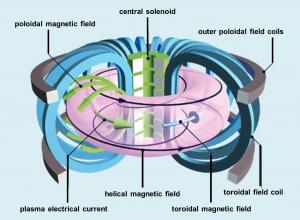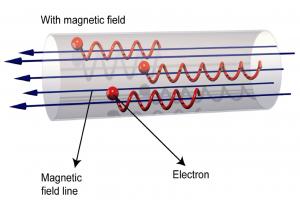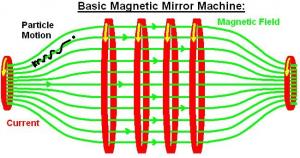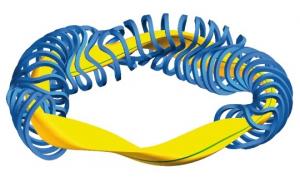Searching for the perfect shape
The perfect magnetic trap doesn't exist. Over time plasma physicists have experimented with different types of cylinders, magnetic mirrors and circular or helical shapes to optimize control of the plasma. While R&D continues on many fusion energy configurations, the torus-shaped tokamak has yet to be dethroned as the highest performing fusion device.
In the early days of plasma research, physicists experimented with cylindrical systems—devices with coils around a tube that created linear magnetic fields running parallel to the vessel body. But the "holes" in the magnetic trap—the cylinder's open ends—resulted in high losses of energy as the plasma particles escaped.
Magnetic mirrors at the two openings of the device, essentially reflecting particles back into the cylinder, were an early attempt to solve the problem. Still, there were substantial losses of energy, despite the mirror trap.
The torus-shaped tokamak, invented in Russia in the 1950s, also enables magnetic field lines that close to form a ring, but its smooth and symmetrical structure is much easier to build than the stellarator. However, there were early difficulties also with the tokamak design when experiments showed that electrically charged particles—while moving within the torus along magnetic field lines—would eventually drift off vertically, hit the walls and be lost.





